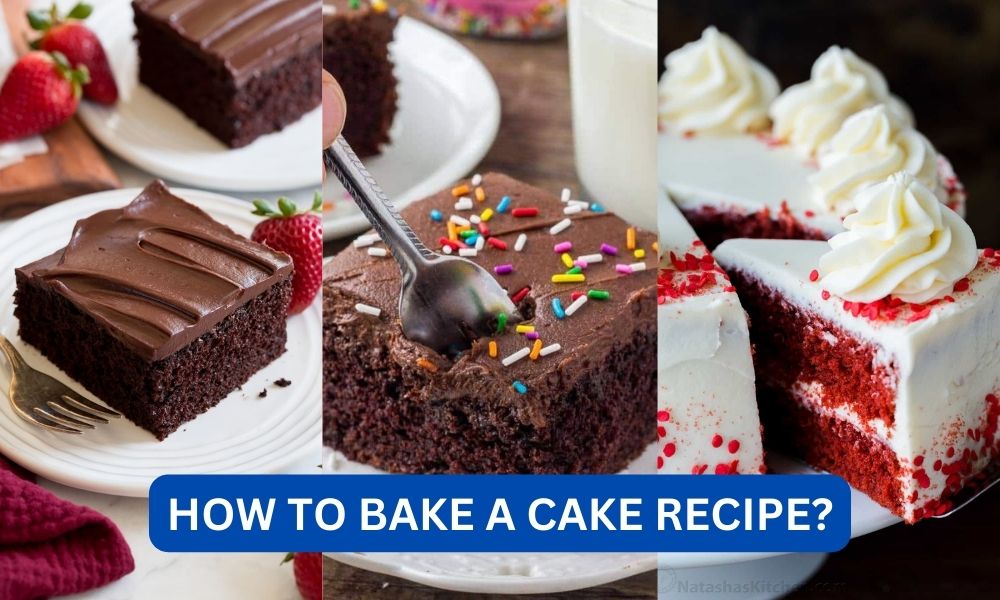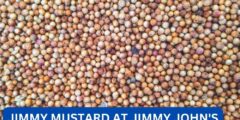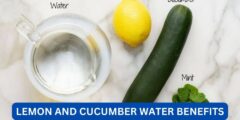Baking a cake is a timeless tradition that has been passed down through generations. Whether it’s for a special occasion or just a sweet treat, there’s nothing quite like a homemade cake. However, for many people, the thought of baking a cake from scratch can be intimidating. But fear not, with the right recipe and techniques, anyone can bake a delicious cake. In this article, we will guide you through the process of baking a cake from start to finish, providing tips and tricks along the way. So put on your apron and let’s get baking!
Contents
- 1 The Importance of a Good Recipe
- 2 Ingredients and Equipment
- 2.1 The Baking Process
- 2.1.1 Step 1: Prepare the Cake Pans
- 2.1.2 Step 2: Mix the Dry Ingredients
- 2.1.3 Step 3: Cream the Butter and Sugar
- 2.1.4 Step 4: Add the Eggs
- 2.1.5 Step 5: Alternate Adding Dry and Wet Ingredients
- 2.1.6 Step 6: Pour the Batter into the Cake Pans
- 2.1.7 Step 7: Bake the Cake
- 2.1.8 Step 8: Cool and Frost the Cake
- 2.2 Troubleshooting Tips
- 2.1 The Baking Process
The Importance of a Good Recipe
Before we dive into the steps of baking a cake, it’s important to understand the importance of a good recipe. A recipe is like a roadmap, guiding you through the process and ensuring that you end up with a delicious and successful outcome. When it comes to baking, precision is key. Unlike cooking, where you can add a pinch of this and a dash of that, baking requires precise measurements and techniques. So, it’s crucial to choose a reliable and well-tested recipe.
There are countless cake recipes available online and in cookbooks, but not all of them are created equal. When choosing a recipe, look for ones that have been tried and tested by others. This could be through online reviews or recommendations from friends and family. Additionally, make sure the recipe includes detailed instructions and measurements. A good recipe will also provide tips and troubleshooting advice, which can come in handy if you encounter any issues while baking.
Read:How to figure out nutritional value of a recipeIngredients and Equipment
Now that you have chosen your recipe, it’s time to gather all the necessary ingredients and equipment. Here is a list of the basic ingredients and equipment you will need to bake a cake:
Ingredients:
- All-purpose flour
- Baking powder
- Baking soda
- Salt
- Butter
- Sugar
- Eggs
- Milk
- Vanilla extract
Of course, depending on the type of cake you are making, you may need additional ingredients such as cocoa powder, chocolate chips, or fruit. It’s important to have all your ingredients measured and ready to go before you start baking. This will save you time and prevent any mistakes.
Equipment:
- Mixing bowls
- Measuring cups and spoons
- Electric mixer or whisk
- Spatula
- Cake pans
- Cooling rack
- Parchment paper
- Oven
Having the right equipment is essential for baking a cake. Make sure your equipment is clean and in good condition before you start. It’s also a good idea to preheat your oven to the required temperature before you begin mixing your ingredients.
Read:How to make fresas con crema recipeThe Baking Process
Now that you have all your ingredients and equipment ready, it’s time to start baking! Follow these steps to ensure a successful and delicious cake:
Step 1: Prepare the Cake Pans
Grease your cake pans with butter or cooking spray and line the bottom with parchment paper. This will prevent the cake from sticking to the pan and make it easier to remove once it’s baked.
Step 2: Mix the Dry Ingredients
In a mixing bowl, combine the flour, baking powder, baking soda, and salt. Use a whisk or fork to mix the ingredients together and break up any lumps. This step is important as it ensures that all the dry ingredients are evenly distributed in the batter.
Step 3: Cream the Butter and Sugar
In a separate mixing bowl, cream the butter and sugar together until light and fluffy. This can be done with an electric mixer or by hand with a whisk. Creaming the butter and sugar together creates air pockets in the batter, resulting in a lighter and fluffier cake.
Step 4: Add the Eggs
Once the butter and sugar are creamed, add in the eggs one at a time, mixing well after each addition. This will ensure that the eggs are fully incorporated into the batter. Adding the eggs one at a time also prevents the batter from curdling.
Read:how to calculate food cost for a recipeStep 5: Alternate Adding Dry and Wet Ingredients
With the mixer on low speed, gradually add the dry ingredients to the wet ingredients, alternating with the milk. Start and end with the dry ingredients. This method helps to prevent overmixing, which can result in a dense and tough cake.
Step 6: Pour the Batter into the Cake Pans
Divide the batter evenly between the prepared cake pans. Use a spatula to smooth out the top of the batter and ensure it’s evenly distributed in the pan.
Step 7: Bake the Cake
Place the cake pans in the preheated oven and bake according to the recipe’s instructions. It’s important not to open the oven door while the cake is baking, as this can cause the cake to sink in the middle. To check if the cake is done, insert a toothpick into the center of the cake. If it comes out clean, the cake is ready.
Step 8: Cool and Frost the Cake
Once the cake is done, remove it from the oven and let it cool in the pan for 10-15 minutes. Then, carefully remove the cake from the pan and let it cool completely on a cooling rack. Once the cake is cooled, you can frost it with your desired frosting or decorate it as you wish.
Troubleshooting Tips
Even with a good recipe and following all the steps, sometimes things can go wrong while baking a cake. Here are some common issues and how to troubleshoot them:
The Cake is Sinking in the Middle
If your cake sinks in the middle, it could be due to several reasons. It could be because the oven temperature was too high, causing the cake to rise too quickly and then collapse. It could also be because the cake was underbaked. To prevent this, make sure to preheat your oven to the correct temperature and bake the cake for the recommended time. You can also use an oven thermometer to ensure your oven is at the correct temperature.
The Cake is Dry and Crumbly
If your cake turns out dry and crumbly, it could be because you overmixed the batter. Overmixing can cause the gluten in the flour to develop, resulting in a tough and dry cake. To prevent this, mix the batter just until the ingredients are combined.
The Cake is Dense and Heavy
If your cake is dense and heavy, it could be because you didn’t measure the ingredients correctly. Baking is a science, and precise measurements are crucial. Make sure to use measuring cups and spoons and level off the ingredients to ensure accuracy.
Conclusion:
Baking a cake may seem daunting at first, but with the right recipe and techniques, anyone can do it. Remember to choose a reliable recipe, gather all the necessary ingredients and equipment, and follow the steps carefully. Don’t be afraid to experiment with different flavors and decorations to make the cake your own. And if something goes wrong, don’t worry, it’s all part of the learning process. With practice, you’ll be baking delicious cakes in no time. So go ahead and give it a try, and enjoy the sweet rewards of your hard work!









